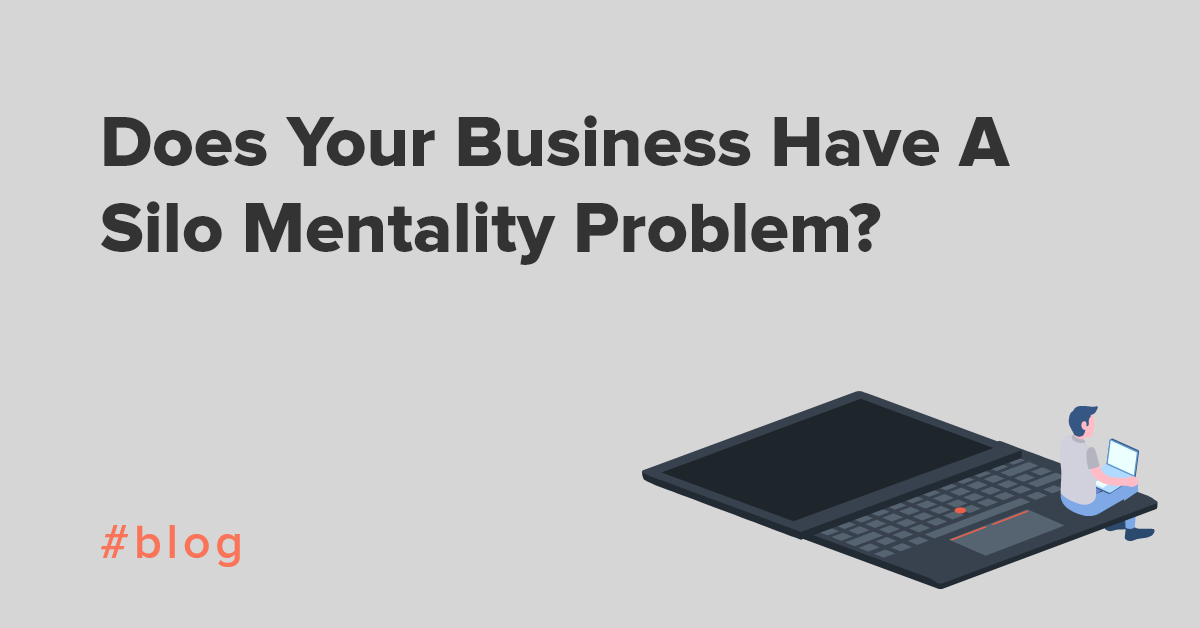‘Silos – and the turf wars they enable – devastate organizations. They waste resources, kill productivity, and jeopardize the achievement of goals.’
- Patrick Lencioni, Silos, Politics and Turf Wars
80 percent of company data is dark and unused. But what can you reasonably do as a manager to shed some light? Though you might not know it, you could be suffering from a silo mentality problem that is not only stopping you from making key, data-driven decisions, but is also preventing sustainable business growth.
What is a data silo ?
A data silo is a compilation of information in your company that is hidden. This data is available to some and not to others in your business. Getting rid of data silos can help you get the knowledge you need to make better business decisions.
A major contributing factor to the creation of data silos is the silo mentality.
What is the silo mentality?
Here's a definition of the silo mentality:
A cultural reluctance to share data with other departments to the detriment of company-wide goals.
And, yes – it’s as bad as it sounds. However, with the right changes to culture and data processes, it’s possible to break the silo mentality, bring down the walls between departments, and unlock the true value of data.
Sound like the shake-up your organization needs? Great.
Let’s take a closer look at why a silo mentality happens and what you can do to fight it.
Leadership’s role in fighting the silo mentality
It all starts from the top – if stakeholders fail to appreciate the danger of data silos, they will unknowingly enable a culture in which the silo mentality thrives. And without them onside, it will be an up-hill struggle to make the changes you need to reboot your culture and mature your data strategy.
Think of this pitch as the first domino you need to topple. Selling them on the importance of combatting silos as the first domino you need to topple.
To get leadership on-board, you need to speak their language. They want to see business growth and love KPIs, so use phrases like these when you speak with them.
Paint a picture in terms of the outcomes they care about, and sell the tangible benefits of eliminating data silos. These include:
- Reduced cost. If you store the same data in multiple siloed locations, you’ll waste money on needless data storage. It makes no sense to pay for storage twice.
- Improved strategy and growth. If analysts don’t share the right information with portfolio managers, managers will lack the tools they need to build a successful portfolio.
- Under-used talent. If employees don’t feel like your culture allows them to share resources, ideas get lost in the wash and your business will stagnate. Data silos prevent teams from working together and reduce the accessibility of critical information.
Eliminate politics and rivalries
Some amount of inter-department rivalry can be helpful. For example, at Amazon, competitiveness drives business growth.
But departments should always put the success of the overall business first, and never seek an advantage by holding back data from other departments. After all, you’re a growing business, not a pirate-ship.
You can reduce company politics and encourage cross-team collaboration by encouraging the following:
- Use technology to help teams connect wherever they are. Whether it’s project management, instant messaging, or online meetings the right tools make it easy to collaborate.
- Borrow and share team members for projects – it'll create new cross-team relationships and help employees to connect both professionally and personally.
- Engage and question team-leaders. If you feel the business might be fragmenting, ask team-leaders how they feel, and what actions they think will improve the situation.
Behind a rivalry there might be fear of what the data will reveal. Perhaps it will show an employee’s poor results or undermine their position. But a healthy and growing organization is built on the insights and clarity that data provides.
So it’s important to put the organization first and pull back the curtain on data. Then, decision makers can make more informed and astute business decisions.
Improve data quality to fight silos
As well as cultural changes, fighting silos also requires changes to how data is managed. Standardized, validated data will bring down the walls in your company because it puts everyone on the same page. Without clear data management, and a common data model, data sets are typically underutilized.
For example, improving consistency of data – so that it is the same across multiple databases – is one way to improve data quality.
CloverDX helped one client by ensuring phone numbers and emails were consistent across databases resulting in over $800,000 in savings. When data quality is improved, silos are diminished, and your business sees consistent results across the board.
Free your data to grow your business
‘In today’s digitized economy, the ability to use data represents a real and essential competitive advantage.’
- Edd Wilder-James, Harvard Business Review
To unlock the true value of your company’s data, you need to break free from the silo mentality. While gaining the support of leadership should be your first port-of-call, you also need to overcome departmental rivalries and politics and build a co-operative culture that shares data and a common vision.
Of course, the quality of your data, and your data architecture, will also determine the extent to which silos form. With high-quality data and a common data model, all departments can share data with one-another and extract the value they need to tackle company-wide goals.
Having more shared data, and more data transparency across the business, can also help you manage your data governance more effectively.
To find out more about the steps you can take to improve your business’ data maturity, take a look at our data quality page.









